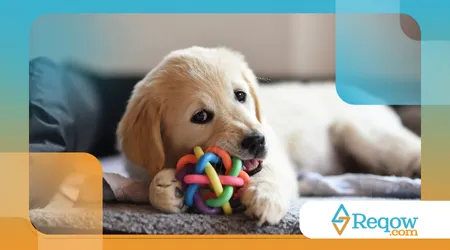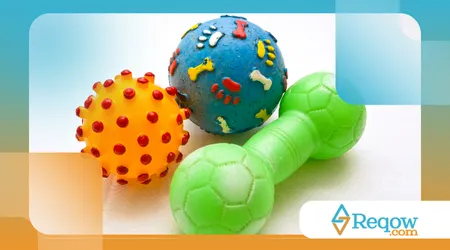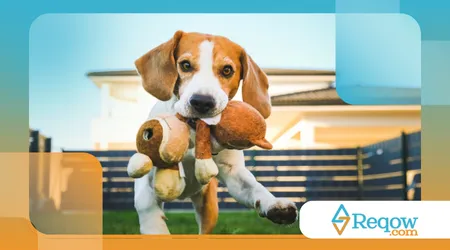Step by step guide to deep cleaning your dog's toys

Deep cleaning of dog toys. The hygiene of your dog's toys is crucial for his health.
Advertisements
They accumulate dirt, bacteria and germs, and can become a source of disease.
In other words, contaminated toys can cause gastrointestinal problems and skin infections. Dogs ingest these microorganisms when they bite and lick their toys.
It's vital to establish a cleaning routine. Cleaning frequency depends on use and type of toy.
Wind-up and plush toys, for example, require special attention. Rubber or plastic toys may be easier to clean.
Advertisements
Keeping your pet's toys clean is an act of love. It ensures not only your dog's health, but yours as well.
After all, who hasn't come across a wet, slobbery toy in the middle of the living room? Poor hygiene can compromise the entire home environment.
Why is cleanliness so important for your dog's health?
Imagine this: your dog, after playing in the garden, picks up his favorite toy. He drags it around the house, throws it on the grass, and licks it.
All this interaction leads to a buildup of dirt. These toys, even though they appear clean, can be teeming with bacteria.
It's like our toothbrush: we need to wash it to prevent germs from accumulating. Dog toys work the same way.
According to a study by the University of Agriculture in Norway, dog toys can harbor more than 40,000 bacteria.
A frightening number that alerts us to the importance of hygiene.
Therefore, many of these bacteria are fecal bacteria. They can cause gastroenteritis, diarrhea, and even urinary tract infections.
A dirty toy can even transmit diseases between animals. It's an invisible danger lurking in your home.
Exposure to mold is also a concern. Molds thrive in damp toys and can lead to respiratory infections.
What about parasites? Fleas and ticks can hide in plush toys.
Your pet's health is directly linked to the hygiene of your belongings. A healthy dog is a happy dog.
Step by step guide to deep cleaning your dog's toys
It's time to get your hands dirty. Separate the toys into groups to make the process easier.
Better yet, classify them by material: plush, rubber, plastic, rope. Each type of toy requires a different method.
Plush and rope toys
Start by checking the labels for specific instructions. Many plush toys are machine washable.
At the same time, use a laundry bag to protect them and prevent damage. Opt for a gentle wash cycle with cold water.
Read more: Caring for paw pads in summer and winter
Ideally, use an unscented, hypoallergenic, baby-safe detergent. Harsh chemicals can irritate your pet's skin.
After washing, drying is crucial. Air dry or tumble dry on low heat. Make sure they're completely dry to prevent mildew.

Rubber, silicone and plastic toys
Cleaning these toys is very simple. You can wash them by hand or in the dishwasher.
If washing by hand, use warm water and mild soap. Scrub with a brush to remove dirt from the crevices.
On the other hand, the dishwasher is an excellent ally. Use it on the normal wash cycle, without soap. The high water temperature is effective for disinfection.
Find out more: How to Prevent and Treat Diaper Rash in Active Dogs
You can also make a vinegar and water solution. Vinegar is a natural disinfectant and safe for pets.
Soak the toys in the solution for 30 minutes. Then rinse them thoroughly.
Metal and wood accessories deep cleaning of dog toys
Toys like metal dumbbells or wooden rings also require attention. They can be cleaned with a brush and soap and water.
Sterilization is important. Boil them in water for a few minutes to kill germs.
Always remember to dry them completely. Moisture causes rust and cracking in the wood.
Toy hygiene chart
| Type of toy | Cleaning frequency | Recommended cleaning method |
| Plush and rope | Weekly or every 15 days | Machine wash (gentle cycle) or hand wash with mild soap |
| Rubber, silicone and plastic | Daily or every 3 days | Wash in the dishwasher (without soap) or by hand with water and mild soap |
| Wood and metal | Weekly | Brushing with soap and water, followed by boiling for disinfection |
Other tips for deep and efficient cleaning
Cleaning toys doesn't stop with washing. Maintenance is key to your dog's health.
Therefore, avoid using products with strong scents. Dogs have a very sensitive sense of smell and can be bothered.
Look how interesting: How to train your dog to walk without pulling on the leash
Replace damaged or very old toys. They can become a danger to your dog.
Pieces of plastic or rope can be swallowed. This can lead to intestinal obstructions, a serious problem.
The routine of deep cleaning of dog toys It's not just about hygiene. It's a way to ensure your pet's longevity and well-being.
After all, a happy and healthy pet is the greatest reward. deep cleaning of dog toys it's an investment in his future.
Have you ever stopped to think about the importance of a deep cleaning of dog toysIt's a small gesture with a big impact.

Deep cleaning your dog's toys is not a luxury, it's a necessity.
Furthermore, caring for your pet goes beyond providing food and affection. Cleaning their toys is a fundamental part of this care.
It's like the foundation of a house: if it's not solid, the entire structure can collapse. A dirty pet exposes itself to unnecessary risks.
A Dogster Magazine survey revealed that fewer than 40% of dog owners clean their pets' toys regularly. This alarming statistic highlights a lack of awareness.
THE deep cleaning of dog toys can prevent disease and prolong the life of your best friend.
It's a simple task that requires little time and effort. But the benefits are immense, both for your dog and for you.
THE deep cleaning of dog toys It's a way to show your love. It's an act of responsibility and care.
Follow this cleaning routine and watch the change. Your dog will be healthier, and your home will be more hygienic.
Frequently Asked Questions about deep cleaning dog toys
1. How often should I clean my dog's toys?
Frequency depends on usage, but every week or every two weeks is a good rule of thumb.
2. Can I use bleach to disinfect toys?
No. Bleach and other harsh chemicals are toxic to dogs. Use only mild soap.
3. What should I do if my dog damages a toy?
If the toy is severely damaged, discard it. Pieces can be swallowed, causing serious problems.
4. Is vinegar safe for cleaning?
Yes, white vinegar is a safe, natural disinfectant. Simply mix it with equal parts water.
5. Can I use the dishwasher for all toys?
Only for rubber, plastic, and silicone toys. Plush and rope toys should be machine washed.
